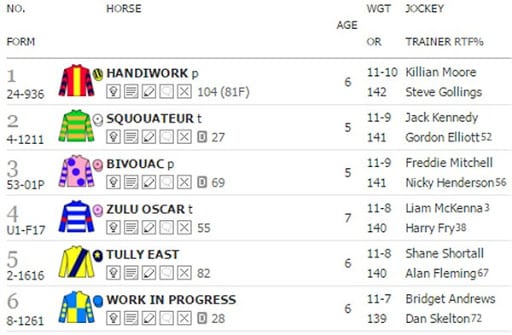Horse racing has been popular throughout history, but it has possibly never been more popular than it is right now.
There are growing numbers of people being attracted to the sport, with the biggest festivals across the world such as Preakness Stakes, Kentucky Derby and Cheltenham, getting bigger numbers with every passing year.
It is important for the growth of the sport that horse racing is able to appeal to the young demographic, but there are still those that attend the racing and place bets without knowing what they are looking for in a winner.
Being knowledgeable on all aspects of racing and knowing what you should be looking for before making a bet is essential for gamblers. While it may not help the gambler achieve wins on every race, it will stand a better chance of long-term profit than simply betting on a horse because of their name or because they are wearing your favourite colours.
Should you read into these factors before making a wager, then your chances of claiming a win will be increased.
What Will You See On The Race Card?
The race card is where the majority of gamblers pick their horse that they will bet on, and this is where you can find the majority of the information that will help you land a winning bet. The information that you can find on a race card includes:
- Horses name
- Year of birth
- Form
- Jockey
- Weight
- Sire/Dam
- Trainer
- Owener/s
Importance Of The Jockey
The first aspect that must be considered is the jockey that is riding the horse. The majority of jockeys largely race for one stable, which means that this is relatively straightforward to understand. Jockey’s form is essential, as you don’t want to be putting on a rider that hasn’t had a winner in a number of weeks.
Some jockeys perform better of certain horses, with the evident recent example being Bryony Frost on board Frodon. The jockey’s form is almost as important as the form of the horse itself.
Horses Form
The form is the biggest giveaway to gamblers. This will help them quickly narrow down the runners that will stand the best chance of winning. Should a horse be on a long winning run, then they will be the favourite to win, while if they have failed to finish on their last three starts, then they would have a far inferior chance of winning the race. Should there be a number of horses in the race that have won recently, then you should examine the horses’ past record at the track. This will help the gambler narrow down the horses that could potentially win the race.
Age of the Horse
The age of the horse is also an important factor to consider. Flat horses tend to reach their peak racing ability between four and five. Meanwhile, jumps horses have a slightly later peak age, as they are at their very best when they are aged between seven and ten. That is the main reason why the Grand National is mainly made up of horses between those ages.
Of course, horses outside of these ranges do stand a chance, but it’s important to realise that they are outside of their peak and that there could be a superior runner in the field.
Weight of the Horse
The final and more complex aspect that gamblers should look into before making a bet is the weight of the horse. This is where a deeper understanding of the going is needed, as weight and the terrain go hand in hand.
This is a bigger factor to consider should there have been a heavy downfall of rain. Horses at top weight will likely be hindered on the softer ground as they will have to work harder than the lighter horses in the field. Jumps fans will also need to understand the importance of handicaps, which will play an important factor in the way that a race may play out.
If all this information was useful for you and you wish to know more about betting on events such as the Kentucky Derby odds, check out Twinspires.com.

